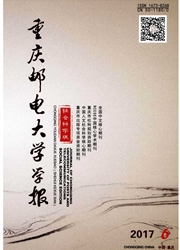

 中文摘要:
中文摘要:
殷商到春秋时期,"口"专指人的嘴。战国以后,在转喻机制的作用下,"口"发生跨域演变,西汉时已成为由于概念域融合而新产生的{口嘴}概念域的上位词。"嘴"专指鸟嘴,产生于东汉,之后其义域不断扩大,使用频率逐渐提高,至唐代完成了上位化演变,到清末则取代了"口"的强势上位词地位。"口"上位化的原因在于古今范畴化方式发生了变化,"嘴"的上位化则是语用、语义、字形变化等各种因素综合作用的结果。
 英文摘要:
英文摘要:
Kou( 口) denoted the mouth of mankind from Shang Dynasty to the Spring and Autumn Period. Motivated by the metonymy mechanism,Kou evolved across domains after the Warring States Period and became the superordinate of{ MOUTH} during the Western Han Dynasty. Zui( 嘴) denoted to the beak which emerged in the Eastern Han Dynasty,and became the hyponym of Kou( 口) with low usage frequency in the { MOUTH}. The meaning domain of Zui expanded constantly and its usage frequency increased gradually after the Six Dynasties. Zui superordinated in the Tang Dynasty and became the predominant superordinate of { MOUTH} in the late Qing Dynasty. The change of categorization for ancient and modern Chinese triggered the Superordinatalization of Kou( 口),and the Superordinatalization of Zui( 嘴)resulted from a combination of various factors such as cognitive and pragmatic factors,change of word form and so on.
 同期刊论文项目
同期刊论文项目
 同项目期刊论文
同项目期刊论文
 期刊信息
期刊信息
